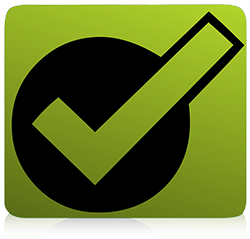Human Resources is the company department responsible for employee matters. HR department employees handle recruiting, benefits and discipline issues and ensure the company grows and remains viable for years into the future. It’s a big job, so HR department employees need eight best HR resources to stay on top of trends, get advice and find the support they need.
-
- Evil HR LadyStarted by Suzanne Lucas, a 10-year HR veteran for a Fortune 500 corporation, Evil HR Lady takes the mystery out of human resources. Learn the truth about your job, find answers to your questions and access a variety of HR blogs and resources listed on this valuable website.
-
- HR.comAccess one of the largest online HR communities at HR.com. In addition to contributing your own blog posts with tips, advice and other HR content, you can find these resources.
Best Practices
Current Articles
Events
News
Templates
Webcasts
White Papers
-
- HR Job BoardsHR professionals find employment opportunities on a variety of job boards, including CareerBuilder or Monster. These general job boards are beneficial, but it also pays to consider HR-specific job boards such as HR.com Job Board, HR Crossing and SHRM’s HR Jobs. They help you track employment trends, learn current hiring practices and discover unique interview tips. While you can check out CareerBuilder or Monster, consider these HR-specific job boards, too.
-
- HR MagazineLearn from one of the most respected HR magazines in the industry when you subscribe to HR Magazine. Get helpful advice, professional tips and practical resources in your mailbox every month.
-
- Human Resources by EntrepreneurThe Human Resources section of Entrepreneur’s website offers online support for business owners. Topics covered include employee:
Benefits
Compensation
Employment Law
Hiring
Managing
Training
-
- LinkedIn GroupsLinkedIn helps professional connect. Join HR groups to expand your network, learn new things and stay updated on trends and news. Linked:HR is the most popular and active group, followed by Human Resources Professionals Worldwide, but there are dozens to choose from.
-
- The Society for Human Resource Management (SHRM)A worldwide organization, SHRM connects over 250,000 HR professionals in over 140 countries. You can also find local SHRM chapters that help you develop decision-making, leadership, management, public speaking and other professional skills. On the website, find HR educational materials, including:
Conferences
Publications
Templates
Tools
- TwitterCheck out the WeFollow directory on Twitter to find hundreds of HR professionals. They share resources, training and advice. You can also add yourself to the directory, tag yourself under Humanresources and start connecting with colleagues.
These eight best HR resources help HR professionals stay updated on industry trends and connect with other HR employees. They also offer helpful advice, support and resources. Use them to better understand what human resources is all about.














